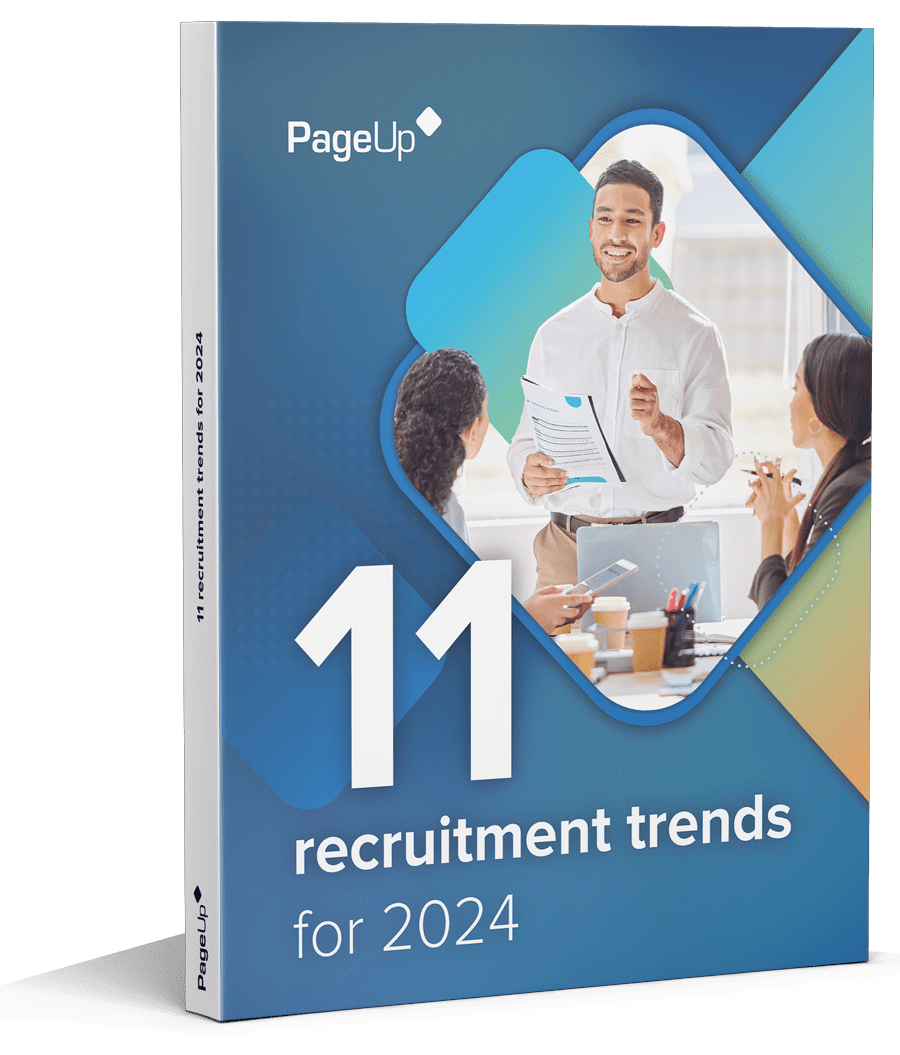If you’re scrambling to fill vacancies as they arise, it’s difficult to find the time or resources to strategically plan for the future. Designing your processes and systems to scale enables you to provide a great candidate and employee experience from recruitment to onboarding, learning and development and beyond, no matter how much your organisationorganization grows. Then, regardless of how successful you are in achieving growth, your scalable processes will ensure you can treat the thousandth employee just as well as the first.
Candidate and employee expectations are soaring. In a competitive market for talent, the experience you provide is your competitive differentiator – from the moment a candidate commences a job search online, to their career progression in the organisationorganization, and everything in between.
How mature are your processes?
It’s useful to identify where you sit in order to understand the next step in optimising your talent management. You can use this talent management maturity curve to help identify where your organisationorganization currently stands – sometimes, organisationsorganizations will be straddling stages of this curve. The four stages are Manual, Automated, Integrated and Holistic.

| Manual | Automated | Integrated | Holistic | |
| Looks like | Inconsistent processes, duplicated data entry and haphazard filing systems waste time and frustrate people. | Siloed teams and software save some time but result in disjointed experiences, and fractured reporting. | An integrated best-of-breed technology stack delivers enhanced experiences and powerful insights. |
An employee-centric talent management framework enabled by best-in-class processes and best of breed technology creates competitive advantage. |
| HR team focus | Transactional – getting the job done. | Becoming more strategic – understanding which processes can be automated to increase capacity, and which processes require a human touch. | HR leverages reporting and analytics to identify areas for improvement. The employee and candidate experience is measured and optimisedoptimized. | C-suite turns to HR for input on organisationalorganizational development decisions. HR is proactive, predictive, and insight-led. |
| Candidate/ employee experience | Candidate and employee experience is deprioritiseddeprioritized in favour of getting the job done. | Recruitment and onboarding is more streamlined – but not yet personalisedpersonalized or connected to learning and development. | Best of breed functionality improves candidate and employee experience, strengthening EVP. Employees are engaged, even in dispersed workforces. | Processes are working together to create a great candidate and employee experience throughout the talent lifecycle. |
| Pain points | Laborious and unscalable, prone to human error. No time for strategic work. Poor employee and candidate experience. | Some processes are automated but systems are disparate leading to inconsistency. | HR functions are still siloed. Doing some strategic activities but these are independent of larger organisationalorganizational goals and may not be connected across HR disciplines. | Need to ensure you communicate areas of focus and their measurement clearly within and outside your team. |
| Advantages | Perceived as cheap or free – although the hidden cost of manual processes, not attracting the right talent, and churn can be high. | Automation creates a more consistent candidate and employee experience. HR professionals claim back time and increase productivity. | Integration with best of breed talent management providers delivers an enhanced candidate and employee experience. HR can attract and retain top talent but the employee experience is still disjointed. | Systems work seamlessly together to provide one source of truth for data and analytics. Seamless integrations create a beautiful candidate and employee journey. |
Maturity across the talent lifecycle
The maturity of your organisationorganization’s processes affect the experience an employee has at each stage of the talent lifecycle.
 |
||||
| Manual | Automated | Integrated | Holistic | |
| Recruitment | Manual, time-consuming and paper-based. Can be costly as hiring agencies are required to meet fluctuating hiring needs. Minimal if any talent pooling, and an inconsistent candidate experience. | Systems automate recruitment workflow and communication to improve efficiency and reduce time to hire. HR teams can be more focused on identifying what’s needed to deliver a great candidate experience. | Best of breed vendors empower recruiters and hiring managers with targeted content, marketing automation, easy reference checking, video interviewing, pre-hire assessments and more. Candidate experience improved. | All systems work together to place the right person in the right role and create pipelines for future vacancies – while surfacing valuable analytics and insights. Recruitment is strategically linked to internal mobility and succession plans. |
| Onboarding | Ad hoc, inconsistent and potentially non-compliant. | Automation helps reduce paper-based processes and gets employees up to speed on their role faster. | Best of breed integrations streamline onboarding for employees and help HR tick off compliance requirements whilst providing a great experience from candidate to new hire and beyond. | The journey from recruitment to onboarding is seamless, sets the scene for the organisationalorganizational culture and gets people up to speed quickly. Proving compliance is effortless. Onboarding and L&D are joined at the hip as the first step in a continuous learning journey. |
| Learning | Focused on compliance. Costly and delivered face to face or through classroom-based formats | Siloed from recruitment and onboarding. It is not closely connected with development or performance reviews. Available on-demand on mobile devices – even in remote or dispersed workforces. | Social learning tools let people drive their own development and share knowledge with peers. OrganisationsOrganizations create personalisedpersonalized learning paths that develop employees for current and future roles. | Learning is linked to recruitment, onboarding, succession and performance to create a continuous learning journey. Learning supports career goals and internal mobility. |
| Performance | Performance feedback is given annually or not at all. Feedback is paper-based and unengaging. | Performance feedback becomes more regular and is consistently captured in a system. | Everyday performance feedback is connected to learning and development opportunities. The experience is consistent for local, remote and dispersed workforces. | Everyday performance feedback connects people to the strategic goals of the business and facilitates just in time learning when it can have the greatest impact. |
| Succession | Succession plans only exist at an executive level – or not at all. | Point in time data is captured for key roles and employee capability on an annual or bi-annual basis. | Tools like 9-box succession planning help measure bench strength and identify skills gaps. | People’s goals and skills are understood, development is facilitated. Internal mobility is systemisedsystemized and is a part of company culture. |
| Data and analytics | Data and analytics are patchy. Important metrics are not captured, understood or measured. | Data and analytics are siloed. Some departments understand ‘what’ is happening, but aren’t equipped to analyse ‘why’. | Analytics are used to diagnose why something happened, and what’s likely to happen if no action is taken. OrganisationsOrganizations can adjust their approaches to meet strategic goals. | Data and analytics come from one source of truth. OrganisationsOrganizations leverage data to predict future trends and shape HR strategy. Data is used in decision-making to improve employee engagement and experience. |
Manual
OrganisationsOrganizations in this stage are working with manual, paper-based processes – they may be storing information in filing cabinets, excel spreadsheets and email inboxes. Processes are ad-hoc, and at this stage you lose valuable talent because they’re not having a great experience. Some organisationsorganizations have systems in place – but these are inefficient to use and offer little self-serve functionality for other people in the business.
At this stage, HR can’t keep up with the demand – for roles, for proper onboarding, for learning and development opportunities, and effective performance management. Managing the day-to-day activities of a scaling organisationorganization is all-consuming. From a hiring perspective, HR is filling roles but may not be measuring bench strength, skills gaps or flight risks. Recruiters are hiring for the short-term tasks that need to be done “right now”, rather than strategically planning to achieve hiring targets and improve candidate experience.
Case study 1: Ditching manual onboarding
One PageUp customer came to us having lost 37 employees in the past month – 11 of which had been with the organisationorganization for less than a year. The organisationorganization knew it had to revamp onboarding to make the process engaging for new starters. By moving from manual paper packets to interactive, online onboarding tasks, new hires were engaged before day one and retention improved.
Case study 2: Overhauling manual performance
One PageUp customer came to us looking to overhaul their manual approach to performance. They knew they had a big problem – they were losing people because they weren’t engaging and developing them effectively. Instead of having ongoing performance conversations, employees were given a paper form once a year. After working closely with the HR team, PageUp helped the organisationorganization implement an everyday approach to performance to build a culture of feedback and transparency.
Automated
Moving from manual to automated processes helps businesses scale and keeps growing workforces engaged. At this stage, many HR teams are still under-resourced and aren’t able to do anything particularly sophisticated or predictive.
Automation makes HR more streamlined and efficient, but processes are often inconsistent and siloed. The overall experience can be disjointed, and reporting is fractured. HR teams are saving some time and making fewer mistakes, but the overall approach is still ad-hoc.
The transition to automated processes isn’t always easy. As HR moves from paper-based processes to automation, line managers need to be engaged and brought along on this transformation journey. Making the move from manual paper-based processes to automated systems while taking care of day to day duties can take considerable time and effort – but is well worth it for the time and cost savings, and improved candidate and employee experience.
Case study: Engaging new starters before day one
Swiss chocolatier Lindt moved from time-consuming paper-based onboarding to an automated, streamlined system designed to keep new starters engaged. Where once it took two weeks between sending out a contract and setting up a new employee in the payroll system, it now takes a little over two days.
Integrated
More sophisticated HR teams integrate best of breed technology solutions to enable their talent management processes, engage employees and provide powerful functionality for HR teams. At this stage, HR teams are focusing on leveraging technology to develop employees and give them the tools to enable their success.
They’re likely to have more mature recruitment models – targeting and nurturing passive candidates, testing recruitment marketing approaches and understanding the skills of their existing employees. Performance has moved beyond annual reviews to a continuous feedback culture which links seamlessly to L&D opportunities, fuelling internal mobilities.
The candidate and employee experience has dramatically improved, but there’s still a way to go to. Behind the scenes, there are multiple owners and some processes are still siloed, which means HR professionals can’t see all the insights they need to make strategic decisions. Reporting is a big focus point for HR teams at this stage. Scaling organisationsorganizations have metrics captured and measured – but not yet fully optimisedoptimized to meet strategic goals.
Case study: Everyday performance feedback, available anywhere
In response to increasing demand from younger workers, organisationsorganizations using apps to provide access to HR functionality including scheduling, payroll, learning and performance. In industries like mining and retail the workforce is dispersed and there are high levels of mobile usage rather than desktop access. One PageUp client found it groundbreaking to have people on site in remote mining locations using everyday performance app. As a result, employees remain engaged and aligned with the goals of the business, and retention has improved.
Holistic
The final stage of the maturity curve sees organisationsorganizations adopting a holistic, employee-centric approach to talent management that prioritisesprioritizes candidate and employee experience. In this stage, a best of breed technology stack gives organisationsorganizations a competitive advantage that helps them attract and retain the best talent. Systems work seamlessly together to create an employee-centric talent management framework that’s scalable – whether you have 500 employees or 500,000. HR professionals can see all the analytics they need in one place, and candidates and employees enjoy a wonderful experience, from recruitment to onboarding, learning, performance, and beyond.
Armed with these insights, HR teams can proactively predict and anticipate trends. HR works with the C-suite to make calculated organisationalorganizational development decisions, and meaningful data helps people ask the right questions to make the right changes.
Conclusion
The time that it takes for an organisationorganization to move through all four stages of the maturity curve will depend on resources, growth, and talent management needs. In order to persuade stakeholders, it’s essential to create business cases which sell the benefits of the investment and address their objections. Securing this support can take years.
If you’d like to learn how to communicate the value of talent management initiatives to internal stakeholders, we’ll be discussing 4 tips to measure the ROI of talent management in our upcoming webinar.
Fresh insights for HR
Stay up to date with HR trends, tips and more when you sign up for our industry newsletter






